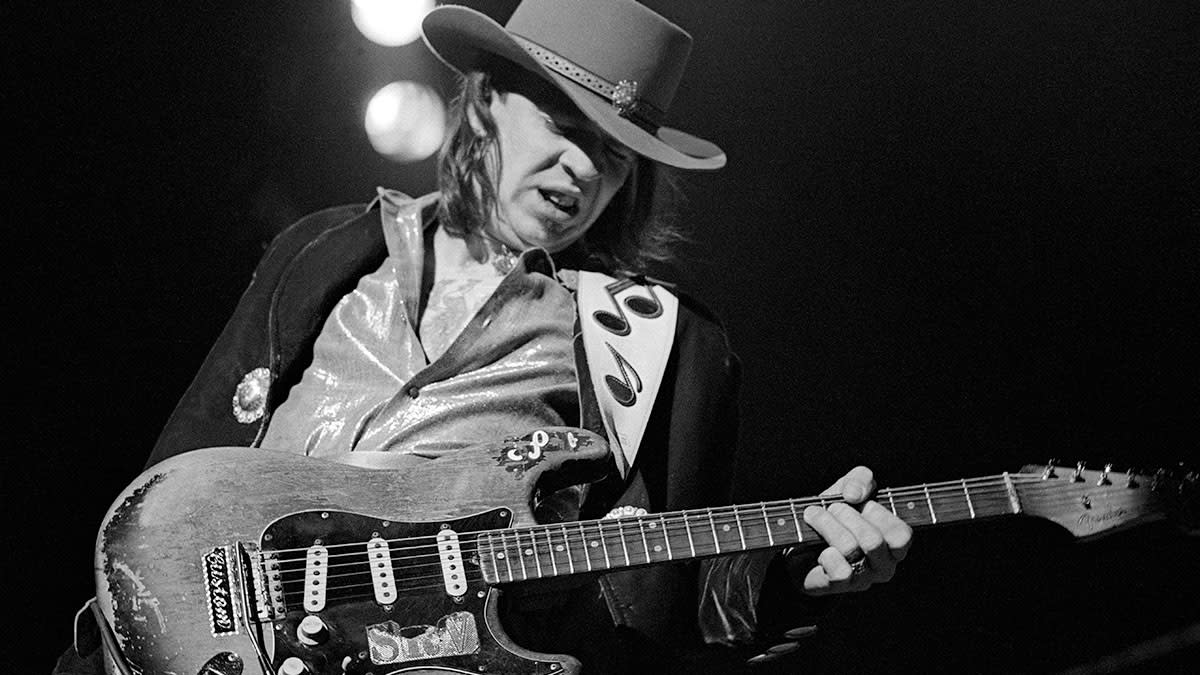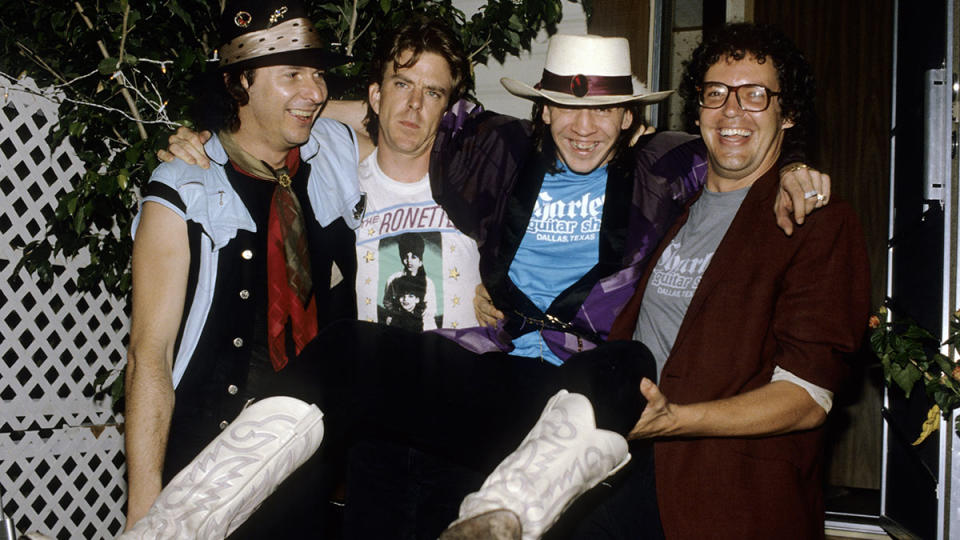“Stevie wasn’t a fluent songwriter”: The making of Stevie Ray Vaughan’s Couldn’t Stand the Weather

- Oops!Something went wrong.Please try again later.
- Oops!Something went wrong.Please try again later.
- Oops!Something went wrong.Please try again later.
- Oops!Something went wrong.Please try again later.
- Oops!Something went wrong.Please try again later.
- Oops!Something went wrong.Please try again later.
- Oops!Something went wrong.Please try again later.
Stevie Ray Vaughan and Double Trouble – drummer Chris Layton and bassist Tommy Shannon – faced the classic second-album conundrum at the end of 1983.
They needed new material quickly, coming off the road from a year of extensive international touring behind Texas Flood, a debut album that included the highlights of their excellent live shows.
“We didn’t have all of these songs floating around for most of the band’s life as we did the first time,” Shannon says. “We had to start from scratch.”
The band spent three weeks doing pre-production in an Austin studio writing and recording demos.
The excellent outtakes released in later years highlight both the band’s strong playing and the need for new tunes, as they were largely playing the music of others, including Jimi Hendrix (Little Wing), Lonnie Mack (Wham!), Muddy Waters (Willie Dixon’s Close to You), Earl King (Come On (Pt. III)), Freddie King (Hideaway) and Hound Dog Taylor (Give Me Back My Wig.)
One song fell into Stevie’s lap when he saw Mike Kindred, a bandmate in the short-lived Triple Threat Revue, who gave him a cassette of Cold Shot, the song the pianist wrote and sang in their former band.
At the sessions the group wrote Couldn’t Stand the Weather, Stang’s Swang, Honey Bee and Scuttle Buttin’, the scorching instrumental, which Vaughan’s brother Jimmie notes was inspired by Mack’s Chicken Pickin’.

“We had to come up with the songs pretty quickly,” Shannon says. “Stevie wasn’t a fluent songwriter; he’d spend a lot of time on a song. Couldn’t Stand the Weather came together over time. We worked through it in rehearsals and gradually put all the sections together. “
The song, which would become the album’s title track, was inspired by Cutter Brandenburg, the group’s initial road manager and first true believer.
A childhood friend of Stevie’s, it was Brandenburg who helped transform Little Stevie into Stevie Ray Vaughan, encouraging him to use his full name, to wear the black hat and to adopt a consistent persona.
Brandenburg had quit on the flight back from a European tour in August 1983, upset by Vaughan’s growing alcohol and drug intake and terrified that he was watching his friend slowly kill himself.
“On the very first day, Richard asked us to play something so he could get sounds, so I did the floor tom drum roll that starts Tin Pan Alley, and Stevie and Tommy just fell in,” Layton says.
“When we were done, John said, ‘You’ll never get it better than that!’ It was a warm up, but he was right; that’s the track we kept.”
The band members were living large, with a big budget and rooms at the Mayflower Hotel, overlooking Central Park. They were in “party down” mode, recalls Layton, with one problem.
“We felt like we couldn’t do drugs in front of John Hammond, so we’d sneak off behind the Steinway piano or a sound baffle. But he knew what we were up to.”
“We couldn’t have been more obvious,” Shannon adds.
Jimmie Vaughan came to the studio and played rhythm guitar on Couldn’t Stand the Weather and a cover of Guitar Slim’s The Things (That) I Used to Do in one afternoon.
He was joined by most of his Fabulous Thunderbirds bandmates, and drummer Fran Christina played on Stang’s Swang because Layton was passed out on the studio couch at the time.
Layton was sleeping on the couch at 4am another morning, when Vaughan woke him up to get behind the drums and record Cold Shot. That first take appears on the album, though they had barely rehearsed the song, and it had no definitive arrangement.
Layton laughs recounting that “drummers have always asked me how I got that super-laid back, in-the-pocket feel. Well… Stevie didn’t sing even a scratch vocal, and it was the first time we’d ever played the song beginning to end. I’ve always wondered if it would have been better if I was really rested and had known the arrangement!”
Another highlight of Couldn’t Stand the Weather is Vaughan’s cover of Voodoo Chile – and he had to be talked into doing it by Shannon, the biggest booster of Stevie letting his Hendrix flag fly.
“He needed encouragement to pursue what was in his heart, and Voodoo Chile was our point of departure into the future,” Shannon says. “It felt like breaking out of jail.”
“Stevie played the song with so much soul and spirit,” recalled producer Richard Mullen. “That take was live from beginning to end, seven minutes of pure guitar energy without a single miscue.”
I always tried to allow Stevie to play without headphones, so he would be just as animated as he was in his live performances
Vaughan played his trusty Number One Strat on most of the album. “He had the most authority and best sound on it,” Mullen said. “It always had a huge tone whether he slammed it or picked it gently.”
The album’s basic tracks were recorded live, with Vaughan standing next to Layton’s drums in the main room. His amps were in a large isolation booth, with a sliding glass door often left open.
“I always tried to allow Stevie to play without headphones, so he would be just as animated as he was in his live performances,” said Mullen. “He danced around, slidin’ across the room on his toes.”
Couldn’t Stand the Weather was released May 15, 1984, and turned out to be an immediate hit, selling 250,000 copies in only its first three weeks in stores.
“After the release, we hit the road with all of these new, fresh songs no one had ever heard, which was great,” Layton says. The album solidified Stevie Ray’s standing as a guitar icon and proved to any doubters that this was no one-hit wonder.
Adapted from Texas Flood: The Inside Story of Stevie Ray Vaughan, by Alan Paul and Andy Aledort.

